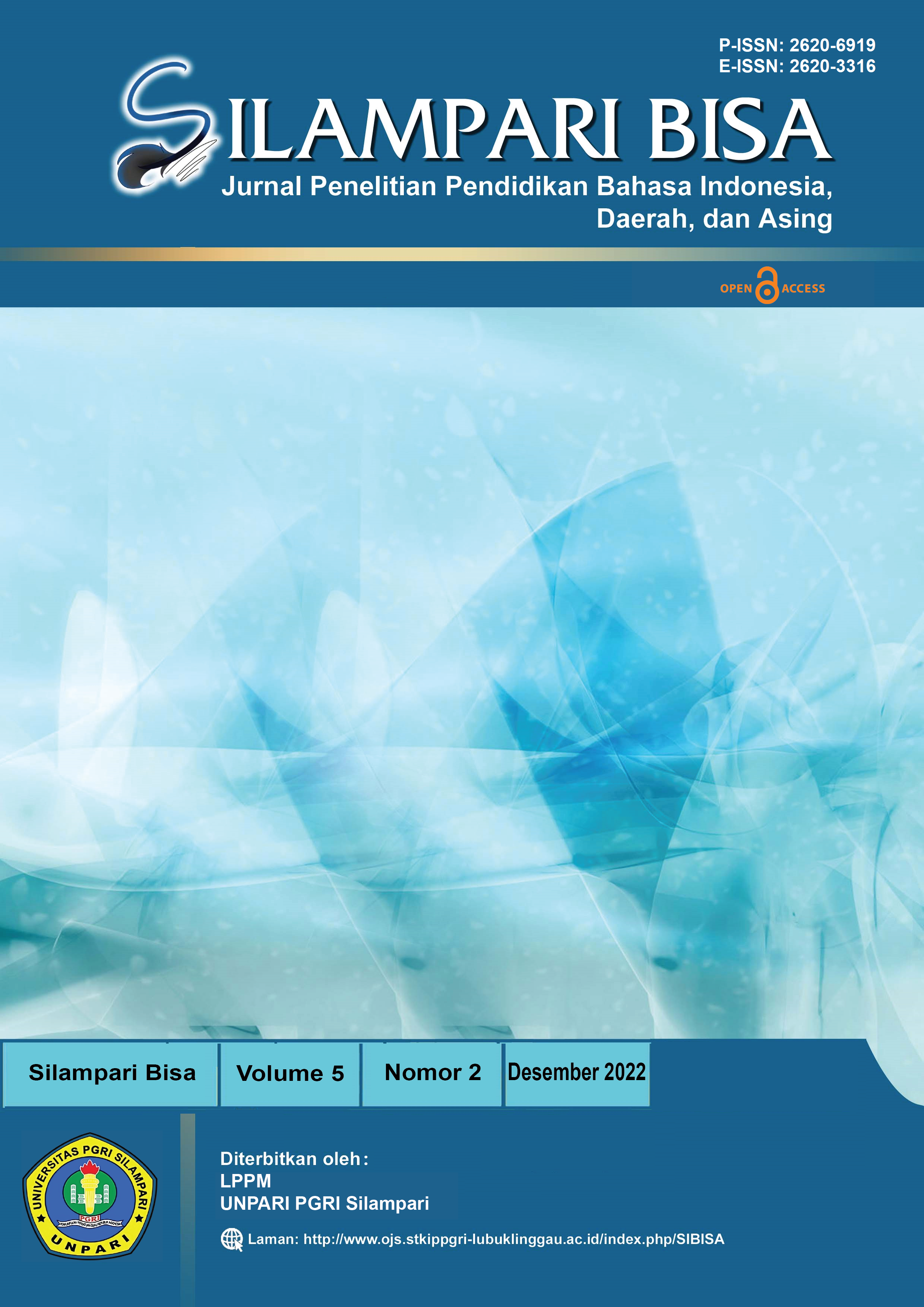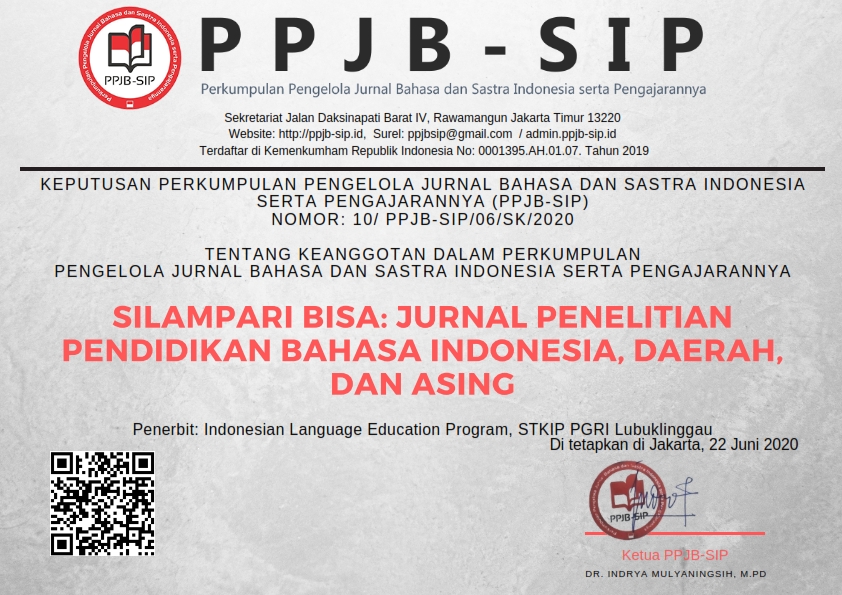Indonesian Pharmacy Students' Motivations for Learning English: A Qualitative Case Study
Abstract
Despite the existence of studies on the motivation of learning, little scholarly work reports the motives of pharmacy students learning English. Further, a majority of those previous studies have been conducted using exclusively quantitative methods. To fill these empirical and methodological gaps, the current research used a qualitative descriptive case study method to explore the Indonesian pharmacy students' motivation for learning English. This study utilised in-depth interviews to gather information from participants. The thematic analysis of the semi-structured interviews presented that the students’ motivation for learning English were for academic purposes, cultural purposes, professional purposes, global interactions, and pleasure. The findings revealed that the orientations of learning English reported by the interviewees covered both integrative and instrumental motivation categories. Additionally, the results in this study contribute to our understanding of Indonesian pharmacy students’ motivation for learning English that can be practically used as references by students, lecturers, and curriculum designers.
References
Al-Manshour, N.S. & Al-shorman, R.A. (2014) The Effect of an Extensive Reading Program on the Writing Performance of Saudi EFL University Students. International Journal of Linguistics, 6(2), 258-275. https://www.macrothink.org/journal/index.php/ijl/article/view/5551
Bateman, B. E., & Oliveira, D. D. A. (2014). Students’ motivation for choosing (or not) to study Portuguese: A survey of beginning-level university classes. Hispania, 97(2), 264–280. https://www.jstor.org/stable/24368776
Chen, S.-A. (2017). Fluctuation of L2 motivation and possible causes: Taiwanese EFL learners. In M. T. Apple, D. Da Silva, & T. Fellner (Eds.), L2 selves and motivations in Asians contexts (pp. 70–93). Multilingual Matters.
Cresswell, J. W. (2007). Qualitative inquiry and research design: Choosing among five traditions. New York: Sage Publications.
Deci, E. ., & Ryan, R. (1985). Intrinsic motivation and self-determination in human behaviour. New York: Plenum Press.
Delaney, Y. A. (2008). Investigating the reading-to-write construct. Journal of English for Academic Purposes, 7(3), 140-150.
Dörnyei, Z. (1994). Understanding L2 motivation : On with the challenge ! The Modern Language Journal, 78(4), 515–523.
Gardner, R. C. (1985). Social psychology and second language learning. Arnold.
Giles, H., & Byrne, J. L. (1982). An intergroup approach to second language acquisition. Journal of Multilingual and Multicultural Development, 1, 17–40.
Gu, M. (2011). Language choice and identity construction in peer interactions: Insight from a multilingual university in Hong Kong. Journal of Multilingual and Multicultural Development, 32(1), 17–31.
Haryanto, E., & Mukminin, A. (2012). Global, national, and local goals: English language policy implementation in an Indonesian international standard school. Excellence in Higher Education, 3(2), 69–78.
Krashen, S., & Kiss, N. (1996). Notes on a polyglot: Kato Lomb. System, 24(2), 207–210.
Lamb, M. (2004). It depends on the students themselves: Independent language learning at an Indonesian state school. Language, Culture and Curriculum,17(3), 229-245.
Lestariyana, R. P. D., Widodo, H. P., & Sulistiyo, U. (2020). Female representation in government-mandated English Language textbooks used in Indonesian Junior High Schools. Sexuality & Culture, 24(4), 1150-1166.
Merriam, S. B. (1998). Qualitative research and case study applications in education. San Francisco: Jossey-Bass.
Marten, L., & Mostert, C. (2012). Background languages, learner motivation and self-assessed progress in learning Zulu as an additional language in the UK. International Journal of Multilingualism, 9(1), 101-128.
Moore, D. (2010). Multilingual literacies and third script acquisition: Young Chinese children in French immersion in Vancouver, Canada. International Journal of Multilingualism, 7(4), 322–342.
Mukminin, A. (2012). Acculturative experiences among Indonesian graduate students in US higher education: Academic shock, adjustment, crisis, and resolution. Excellence in Higher Education, 3(1), 14–36.
Nasrollahi-Mouziraji, A., & Nasrollahi-Mouziraji, A. (2015). Memorization Makes Progress. Theory & Practice in Language Studies, 5(4).
Noprival, N., Rafli, Z., & Nuruddin, N. (2021). The Motivations of learning foreign languages : A descriptive case study of polyglots. The Qualitative Report, 26(12), 3823–3833.
Pratt, C., Agnello, M. F., & Santos, S. (2009). Factors that motivate high-school students’ decisions to Study Spanish. Hispania, 92(4), 800–813.
Rani, Y. M. (2017). Task based language teaching in promoting the target language culture through idioms and proverbs–a case study. International Journal of Linguistics and Literature (IJLL), 6(1), 1-10.
Saldaña, J. (2009). The coding manual for qualitative researchers. New York: Sage Publications.
Yee, K. M., & Abidin, M. J. Z. (2014). The use of public speaking in motivating ESL learners to overcome speech anxiety. International journal on studies in English language and literature (IJSELL), 2(11), 127-135.
Yin, R. K. (2018). Case study research and applications: Design and methods (6th ed.). New York: Sage Publications.
Zhao, R. & Hirvela, A. (2015). Undergraduate ESL students’ engagement in academic reading and writing in learning to write a synthesis paper. Reading in a Foreign Language, 27(2), 219–241. https://nflrc.hawaii.edu/rfl/item/328












